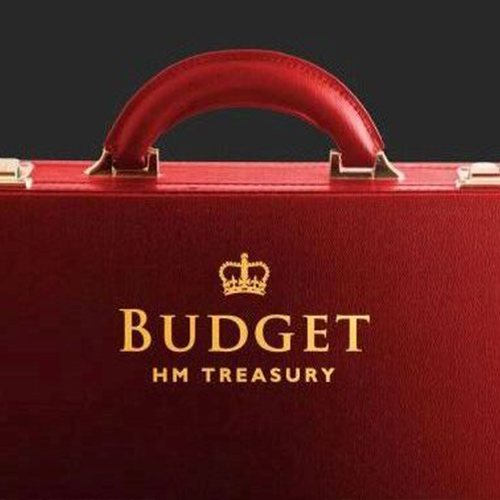Rathbones’ Ed Smith: ‘Small giveaway budget offset by grave deterioration in the outlook for UK growth and the government’s tax receipts shouldn’t move the dial for investors.’

Rathbones: Budget analysis
Article last updated 1 March 2023.
Rathbones’ Ed Smith: ‘Small giveaway budget offset by grave deterioration in the outlook for UK growth and the government’s tax receipts shouldn’t move the dial for investors.’
- Chancellor’s ‘headroom’ squeezed by gloomier fiscal and productivity outlook
- More relief from austerity would have been welcome
- Stamp-duty relief likely to be ‘capitalised’ in higher house prices. Even the OBR criticise the policy.
- Rathbones’ negative outlook for UK growth and sterling unchanged
All told, the November Budget has not caused us to reassess our assumptions for domestic investments or the British pound.
The first Autumn Budget was a giveaway budget. Policy decisions sum to a net £22 billion over the next four fiscal years, the bulk attributable to new spending rather than lower taxation. Yet £22 billion equates to a fraction of GDP over the period. Chancellor Philip Hammond has eased the squeeze he brought to Parliament in his red briefcase eight months ago, but he is still squeezing nevertheless. The austerity programme will not end before 2022-23. In other words, while the November Budget marks a fiscal loosening relative to the March plan, it is still a programme of fiscal tightening in absolute terms.
Moreover, the modest giveaway is framed by a grave deterioration of the outlook for UK growth, driven by the downgrades to business investment and productivity as assessed by the Office for Budgetary Responsibility (OBR). The OBR also forecast real wages to continue to fall and unemployment to start to increase again from 2019. Growth is now expected to average just 1.4% over the next five years, and this is the first time since the OBR was established that growth is expected to be lower than 2% in every year forecast.
The OBR’s estimates are now towards of the lower end of the range of estimates from other independent forecasters. However, we do not believe that their medium-term projection is particularly pessimistic. They estimate growth will stabilise at 1.6% in 2023; coincidentally, our own projection of the UK’s potential GDP growth over the next 10 years is 1.6% per annum. And our forecast does not include any adjustment for Brexit.
Productivity growth is now expected to recover on a shallower trajectory to 1.3% a year by 2022-23. Previously they assumed it would return to the 2% trend. This lowers potential output growth to 1.6% by the end of the forecast, and that means lower tax receipts on future output. But the recent absence of productivity growth may mean that even this will still prove too optimistic, especially when one considers that lower than expected productivity growth is a global phenomenon. Comparing the forecasts for productivity growth across the G7 economies made by the OECD in 2014 to the actual outturns makes plain that the UK is not unique.
The UK’s debt burden is the second lowest in the G7 and with interest rates set to stay so low we would have welcomed much more relief from austerity. While the UK’s austerity programme becomes more acute again, fiscal policy is scheduled to be a relatively slight drag on economic activity across the rest of the developed world. Based on the November Budget, we estimate that fiscal drag will be between two and four times more severe in the UK than across the G7 economies as a whole.
Why is productivity growth so low?
It’s possible that low productivity growth may be a result of mismeasurement. The 2016 Independent Review of UK Economic Statistics led by Professor Charles Bean hypothesised that the failure to fully capture the digital economy might mean UK productivity is under-estimated by around 0.5 percentage points per year. For example, business investment in intangible intellectual property such as computer code is often not captured in business investment. Furthermore, the gap between what is measured and what is valued often grows every time access is gained to a completely new good or service, or when existing goods or services are offered free after digitalisation. Yet most studies have found that mismeasurement alone is unlikely to account for the majority of the productivity puzzle. Moreover, the slowdown in productivity appears to be largely unrelated to the penetration of IT across business sectors and countries.
There are a number of other possible explanations. These are fiercely contested by economists and consensus has not formed around any salient arguments.
There’s plenty of evidence to suggest that financial crises can have a persistent downward effect on growth. After 2008, the availability of bank financing was constricted as banks rebuilt their balance sheets, constraining firms’ investment plans. It may have hit young companies hardest, where productivity growth is often fastest. However, the UK and US financial systems have been back to much better health for some time and this explanation looks less plausible today.
It’s also possible that highly accommodative monetary policy has kept borrowing costs for weaker firms - with low or even negative productivity growth – low enough for them to survive, constraining the amount of capital that could be reallocated to higher productivity growth firms. At the same time, business investment has been depressed for a long time, despite these highly accommodative interest rates. The slow growth of new investments has also likely slowed productivity gains.
Some economists argue that today’s innovations do not have the same productive potential as those of yesteryear, although others contend that many emerging technologies could revolutionise the economy, such as robotics, artificial intelligence, the blockchain and personalised medicine (which we have discussed in our recent report on disruptive technologies, How soon is now?). Certainly, there is evidence to suggest that productivity can lag innovation. For example, considerable organisational investment is required from companies before new technology can become transformative. The internet didn’t disrupt retail until billions were invested in new shipping logistics and supply chain management. It could also be that the vast sums invested in social media have changed our consumption habits but not out productive potential (in fact, think about how it presents many more distractions from our work!)
Although the idea that innovation has slowed is contentious, the idea that the diffusion of innovation has slowed is becoming more accepted. The fierce defence of patents and the greater need for scale and scope in today’s globalised marketplace could be inhibiting the transmission of new ideas across firms and industries.
Ed Smith
Head of Asset Allocation Research
For further information, please contact:
Madhu Kalia, Rathbones - 020 7399 0256/madhu.kalia@rathbones.com
Hugo Mortimer-Harvey, Quill PR - 020 7466 5054/hugo@quillpr.com
Notes to editors:
About Rathbones Group Plc: Rathbones Group Plc, through its subsidiaries, is one of the UK’s leading providers of investment management services for individuals, charities and professional advisers. This includes discretionary investment management, unit trusts, tax planning, trust and company management, financial advice and banking services. Rathbones manages £37.5bn of assets (as at 30 September, 2017). This includes £5bn run by Rathbone Unit Trust Management. Rathbones has over 1,100 staff in 16 locations across the UK and Jersey. Rathbone Investment Management Limited is authorised by the Prudential Regulation Authority and regulated by the Financial Conduct Authority and the Prudential Regulation Authority. Registered office: Port of Liverpool Building, Pier Head, Liverpool L3 1NW. Registered in England No. 1448919. Rathbone Investment Management Limited is part of Rathbones Group Plc. Head office 8 Finsbury Circus London EC2M 7AZ. The information contained in this note is for use by investment advisers and journalists and must not be circulated to private clients or to the general public. Past performance should not be seen as an indication of future performance. The value of investments and the income from them may go down as well as up and you may not get back your original investment. Edward Smith is Head of Asset Allocation Research. The views reflected in the press release are his own and should not be taken as investment advice.







